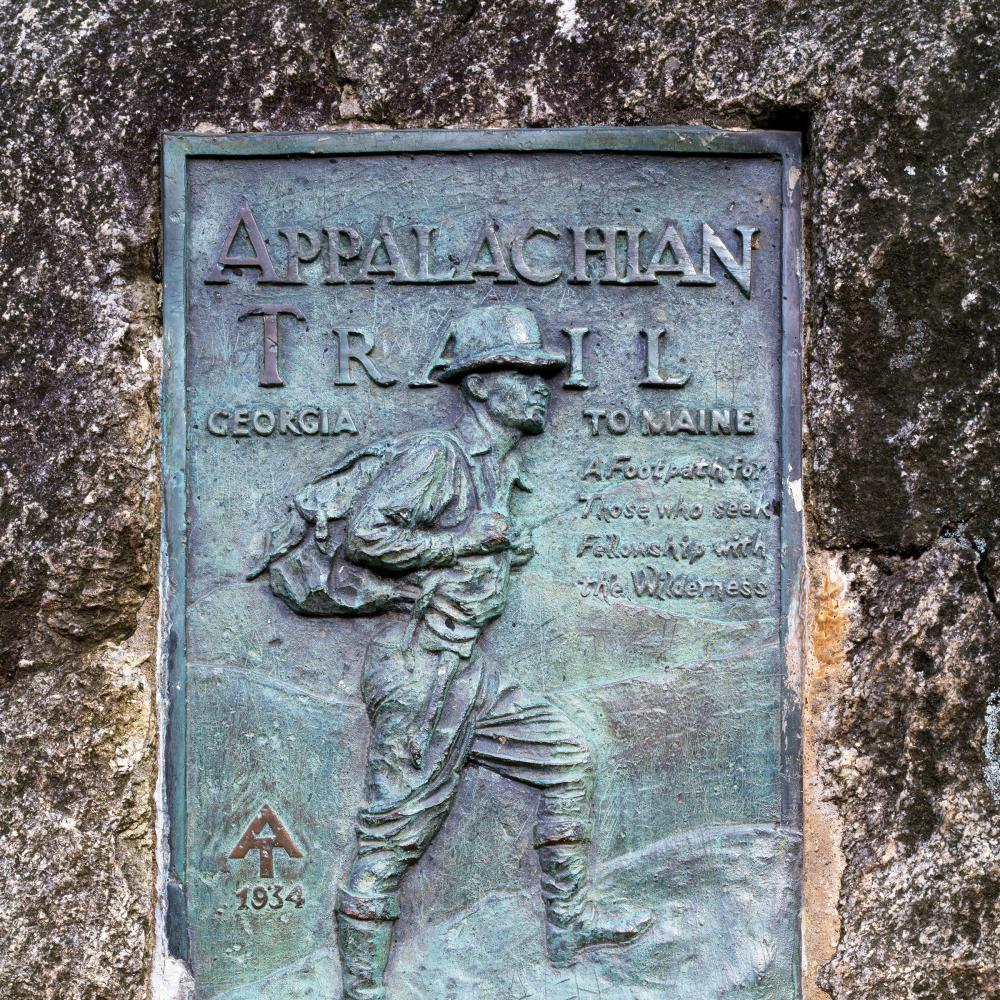When World War II veteran Earl Shaffer began hiking the Appalachian Trail at Mount Oglethorpe in Georgia in April 1948, his intent was therapeutic: He wanted to “walk the army out of [his] system.” He finished at Mount Katahdin in Maine 124 days later, the first person to walk the whole 2,181 miles of the AT in one season. He wrote, “I almost wished that the Trail really was endless, that no one could ever hike its length.”
Since then, over fourteen thousand people have completed the expansive hike—including dancer Jacques d’Amboise, former Supreme Court Justice William O. Douglas, and Emma “Grandma” Gatewood, who at sixty-seven completed the trek in a pair of Keds, her only gear being an army blanket and a raincoat wrapped up in an old shower curtain. To hike the entire trail usually takes a commitment of five to seven months, and some do it over and over again.
Benton MacKaye, the man known as the founder of the Appalachian Trail, understood the emotional pull of the wilderness. He said his own inspiration for the AT came to him “at the end of a hike to the peak of Vermont’s Stratton Mountain in July 1900,” wrote Brian B. King. “Climbing to the top of a tree for better views, [MacKaye] wrote, ‘I felt as if atop the world, with a sort of ‘planetary feeling.’ . . . Would a footpath someday reach [far-southern peaks] from where I was then perched?’”
At another peak, in New Hampshire’s White Mountains, sits Summit House, about 2,000 feet above sea level, and the appropriate site for a talk by Larry Anderson about MacKaye. The development of the Appalachian Trail, said Anderson, who has written a book on MacKaye, in turn led to the Wilderness Act of 1964, which celebrated its fiftieth anniversary in September.
Born in 1879, MacKaye was the sixth of seven children sired by a chronically indebted playwright. The family moved often, and young Benton began to thrive when the family settled in Shirley Center, Massachusetts, northwest of Boston. Anderson showed a slide of a journal MacKaye started at age fourteen, when he decided to catalog the entire world, starting, and ending it turned out, with his hometown.
“His work was set for him,” said Anderson, whose talk was supported by a grant from the New Hampshire Humanities Council. “His way of viewing the world was established.”
MacKaye went to Harvard, where he struggled academically. Eventually, he earned a degree in forestry and taught the subject there. But he spent much of his youth and young manhood surveying the woods of northern New England, particularly New Hampshire’s White Mountains. Anderson said MacKaye’s early years in the Granite State provided much of the inspiration for the Appalachian Trail. He blazed trails and encouraged the many trail clubs in the state to link their trails together to form a network.
Slowed by health problems in his thirties, MacKaye developed a reputation as an armchair trail advocate, despite his earlier feats of long-distance hiking. His proposal for the Appalachian Trail, laid out in an October 1921 article in the Journal of the American Institute of Architects, was far grander than today’s AT.
“He conceived of the Appalachian Trail not just as a hiking trail, but as a thread of nonprofit and resource-based communities along the way,” Anderson said.
In addition to a trail from Mt. Washington in New Hampshire to Mt. Mitchell in North Carolina, MacKaye’s utopian vision called for three kinds of communities: shelter communities for hikers; community camps or small clusters of private homes “for recreation, recuperation and for study”; and food and farm camps, agricultural settlements near the trail. Those communities would provide not only new opportunities for rural living, but new space where urban workers might camp, hike, and fish.
MacKaye organized the first Appalachian Trail Conference in 1925. Thereafter, the trail’s supporters looked on it largely as a hiking route and MacKaye became less active in its development. But MacKaye had provided a rationale for preserving the wilderness: “Camping grounds, of course, require wild lands,” he wrote. The 1911 Weeks Act had given the federal government the authority to buy private land for establishing and preserving national forests—forests that the AT travels through.
The Weeks Act, and the books and trails that came after, sowed the seeds for the Wilderness Act, which envisioned, “A wilderness, in contrast with those areas where man and his works dominate the landscape, is hereby recognized as an area where the earth and its community of life are untrammeled by man, where man himself is a visitor who does not remain.” Since 1964, it has established 109.5 million acres of protected wilderness across forty-four states.
The White Mountain National Forest now comprises nearly 800,000 acres, including 153,000 set aside as wilderness. As Anderson concluded his talk, an expanse of those lands and the forested mountains traversed by the Appalachian Trail were bathing in the summer evening’s slanting light. MacKaye, who died in 1975 at the age of ninety-six, lived long enough to see such views.


